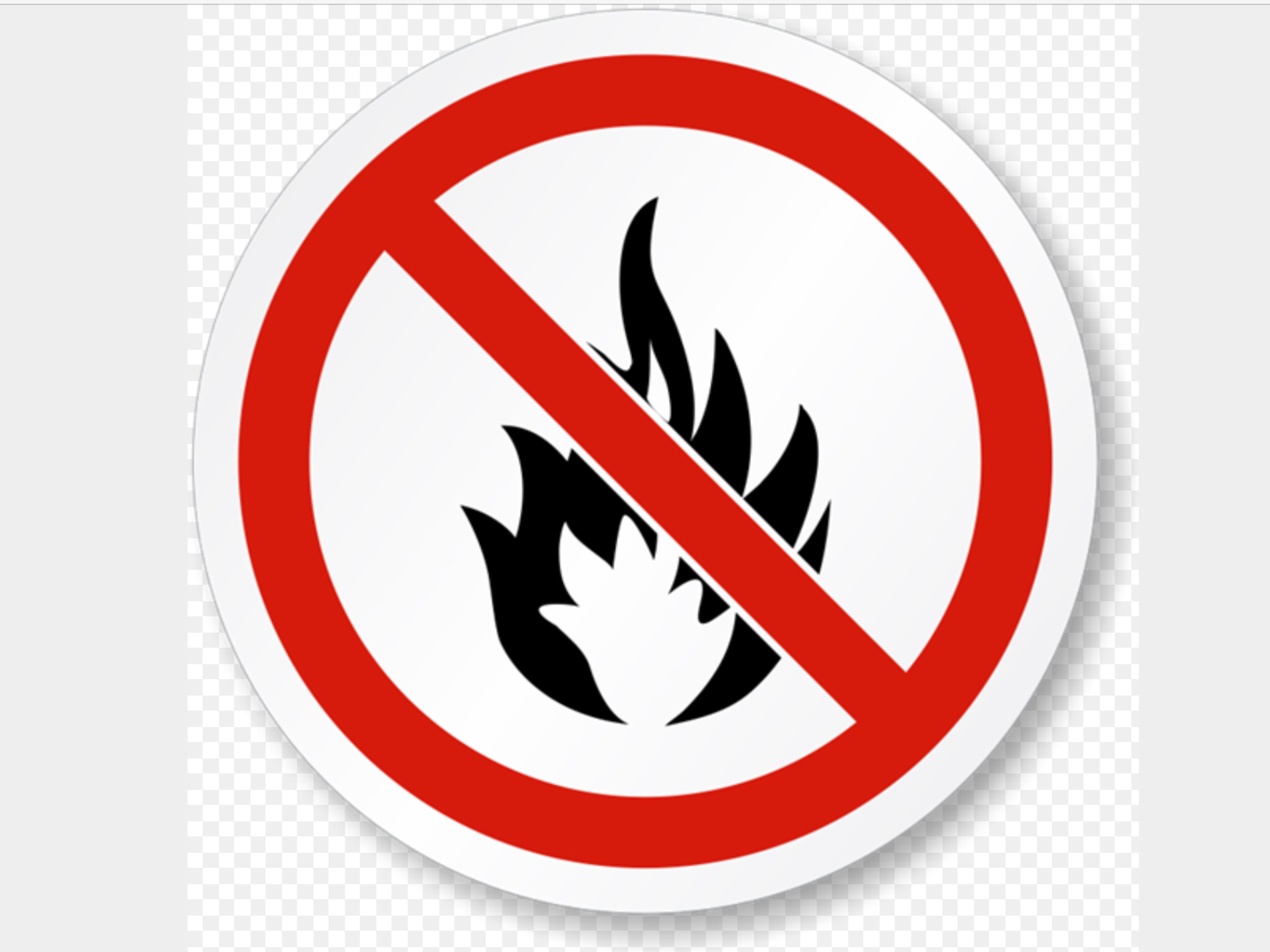Information
-
Site
-
Conducted on
-
Prepared by
GENERAL INFORMATION
Introduction and overview of the premises
The Responsible Person for Fire Safety
-
Information about the responsible person
-
Name of the Responsible Person
The Building
-
Number of Floors
-
Floor Area Total (m2 total)
-
Construction Type
-
Premises use
The Occupants
-
Approximate maximum number
-
Approximate Employees
Occupants Especially at Risk
-
Any disabled or less abled occupants
-
Any children occupants (under 16)
-
Any occupants working in remote areas or lone working
Fire Loss Experience
-
Any history of fire loss in the last 5 years?
-
Any enforcement notices served within the last 5 years?
Other Relevant Background Information
-
Any residential properties in or attached to the building?
FIRE HAZARDS ELIMINATION OR CONTROL
Electrical Sources of Ignition
-
Are reasonable measures taken to prevent fires of electrical origin?
-
Is the fixed wiring installation periodically tested and inspected?
-
Are portable appliances annually tested and visually inspected?
-
Is there suitable limitation of trailing leads?
-
Is "daisy chaining" electrical extension leads avoided?
-
Is the use of multi plug "tree" adaptors avoided?
-
Are records of electrical testing kept on site and available?
-
Section Comments
Arson
-
Is there suitable security arrangements in place to prevent arson?
-
Is there sufficient controls in place to prevent unnecessary fire load in close proximity to building exterior?
Portable Heaters and Heating Installations
-
Is the use of portable heaters avoided as far as reasonably practicable?
-
Suitable measures in place to reduce ignition risk (clear zones etc)?
-
Are fixed heating systems regularly inspected and maintained?
-
Section Coments
Cooking Facilities
-
Other than microwave or kettle, are there cooking facilities on site? (Only tick if you have a kitchen on site)
-
Filters and ductwork cleaned regularly?
-
Are combustible items kept clear from ignition sources?
-
Are reasonable measures taken to prevent cooking fires?
-
Suitable extinguishers available?
-
Section Comments
Housekeeping
-
Is general standard of housekeeping adequate?
-
Are combustible materials separated from ignition sources?
-
Is the unnecessary accumulation of combustibles and waste avoided?
-
Is there appropriate storage of hazardous materials on site?
-
Are highly combustible materials suitably stored?
-
Section Comments
Hazards Introduced by Outside Contractors and Building Works
-
Are fire safety controls imposed on outside contractors such as a work permit and risk assessment process?
-
Are there satisfactory control over works carried out to prevent fire risk (hot work permits etc)?
-
Are there satisfactory controls over works carried out by in-house maintenance personnel (hot works etc)?
-
Are there safe storage arrangements for potential harmful materials (gas bottles etc) if on site?
-
Section Comments
Dangerous Substances
-
Are there any dangerous substances stored on site?
-
Are adequate controls in place?
-
If substances are stored, have suitable risk assessments been completed?
-
Section Comments
FIRE HAZARD CONTROL - FINAL COMMENTS
-
Any further or general observations on Fire Hazard and Control should be noted below
-
Final Comments
FIRE PROTECTION MEASURES
Means of Escape
-
Is it considered that the premises is provided with reasonable means of escape in case of fire?
-
Are there sufficient exits from all areas of the premises?
-
Are all exits easily and immediately openable by ANY person (no special knowledge needed by visitors)?
-
Do fire exits open in direction of travel?
-
Is there reasonable travel distances - SINGLE DIRECTION of travel?
-
Is there reasonable travel distances for - ALTERNATIVE MEANS of escape?
-
Are escape routes adequately protected from fire?
-
Are there suitable precautions for inner rooms such as plant rooms and enclosed offices?
-
Are escape routes maintained as unobstructed and checked?
-
Is there a rule regards no combustible items in protected fire routes?
-
Is there suitable arrangements in place for the evacuation of less able persons?
-
Section Comments
Measures to Limit Fire Spread and Development
-
Is there a sufficient standard of compartmentation? *
-
Are there reasonable limitations of linings that may promote fire spread? **
-
Where possible confirm fire dampers are provided as necessary?***
-
* Based on visual inspection only of readily accessible areas only
** Based on visual inspection only. No sampling of linings have been taken
*** Based on knowledge of on site personnel only. No access to HVAC systems. Assessment of HVAC systems is outside the scope of this report. -
Section Comments
Emergency Escape Lighting
-
Is there a reasonable standard of escape lighting provided?
-
Section Comments
Fire Safety Signage
-
Is there generally a good standard of fire safety signage and notices around the site?
-
All fire exits clearly marked?
-
Where required are there keep clear signage on external fire exit doors?
-
Section Comments
Means of Giving Warning in Case of Fire
-
Is there a manually operated electrical fire alarm system provided? *
-
Is there an automatic fire detection system provided?
-
Does the alarm system allow for remote transmission of the alarm signal?
-
Section Comments
Manual Fire Extinguisher Appliances
-
Is there suitable and sufficient provision of portable fire fighting equipment?*
-
Is the portable fire fighting equipment suitable for the fire risk present in the areas sited?
-
Are all portable fire fighting equipment unobstructed and easily accessible?
-
Is there suitable signage for use of portable fire fighting equipment located local to the equipment?
-
Section Comments
Relevant Automatic Fire Extinguishing Systems
-
Is there installed automatic fire extinguishing systems such as sprinklers?
-
Type of system if applicable.
-
Comments and observation on system
FIRE PROTECTION MEASURES
-
Any further or general observations on Fire Protection Measures should be noted below
-
Final Comments
MANAGEMENT OF FIRE SAFETY
Procedures and Arrangements
-
Has a "Responsible Person" been formally appointed for the premises?
-
Is the "Responsible Person" fully aware of their role and responsibilities?
-
Have sufficient "Competent Persons" been appointed to assist the responsible person?
-
Have the "Competent Persons" received suitable and sufficient training in their role?
-
Are the identities of those persons with fire safety responsibilities clearly indicated?
-
Are there appropriate fire procedures in place? More specifically;
-
Are procedures in the event of fire appropriate and properly documented?
-
Are there specific and suitable arrangements in place for summoning the fire and rescue service?
-
Are emergency plans or instructions easily available?
-
Is there specific responsibility to meet fire and rescue service on arrival and to provide relevant information?
-
Are there suitable arrangements in place to ensure the premises have been evacuated?
-
Is there a suitable fire assembly point noted and clearly indicated?
-
Are there suitable arrangements in place to routinely inspect fire safety precaution and equipment (ie during regular H&S inspections)?
-
Section Comments
Training and Drills
-
Are staff given suitable fire safety training on induction?
-
Are staff given adequate periodic "refresher training" at suitable intervals?
-
Are those persons with specific fire duties given adequate training?
-
Has a fire evacuation drill of the premises been carried out in the last 12 months?
-
Date of last evacuation
-
Section Comments
Testing and Maintenance
-
Is the workplace adequately and routinely maintained?
-
Is there weekly testing of the fire alarm system?
-
Is the fire alarm system adequately maintained by a suitable contractor?
-
Is there monthly and annual testing of the emergency escape lighting?
-
Is there annual testing and maintenance of portable fire fighting equipment?
-
Where installed - Six monthly and annual testing of wet / dry risers?
-
Where installed - suitable testing and maintenance of fire -fighting lifts?
-
Where installed - suitable testing and periodic inspection of sprinkler systems?
-
Periodic inspection of external escape routes, gangways and staircase?
-
Is there routine checks made of final exit doors (test for ease of operation and obstructions)? - this could be on a weekly maintenance list.
-
Section Comments
Records
-
Are there suitable and sufficient records of:
-
Fire drills?
-
Fire training?
-
Fire alarm testing?
-
Emergency escape lighting testing?
-
Maintenance of other fire protection systems where applicable?
-
Section Comments
MANAGEMENT OF FIRE SAFETY
-
Any further or general observations on the Management of Fire Safety should be noted below
-
Final Comments
RISK RATING
Risk Rating Overview
-
The following simple fire risk estimator is based on commonly used health and safety risk level indicator. Please see Appendix for more information on risk rating definitions and calculations
HAZARD RISK RATING
-
Taking in to consideration the fire prevention measures observed at the time of this risk assessment, it is considered that the HAZARD from fire (likelihood of fire) at the premises is:
-
HAZARD RATING
-
LOW: Unusually low likelihood of fire as a result of negligible potential sources of ignition
-
MEDIUM: Normal fire hazards (e.g. potential ignition sources) for this type of occupancy, with fire hazards generally subject to appropriate controls (other than minor short comings)
-
HIGH: Lack of adequate controls applied to one or more significant fire hazards, such as to result in significant increase in likelihood of fire
CONSEQUENCE RISK RATING
-
Taking into account the nature of the premises and the occupants, as well as the fire protection and procedural arrangements observed at the time of this fire risk assessment, it is considered that the consequence for life safety in the event of fire would be:
-
CONSEQUENCE RATING
-
SLIGHT HARM: Outbreak of fire unlikely to result in serious injury or death of any occupant (other than an occupant sleeping in a room in which the fire occurs)
-
MODERATE HARM: Outbreak of fire could foreseeably result in injury (including serious injury) of one or more occupants, but it is unlikely to involve multiple fatalities
-
EXTREME HARM: Significant potential for serious injury or death of one or more occupants
RISK TO LIFE ESTIMATE - Overall Risk Assessment Rating
-
Accordingly, it is considered that the risk to life from fire at these premises is:
-
OVERALL RISK ESTIMATE
-
TOLERABLE: No major additional fire precautions required. However, there might be a need for reasonably practicable improvements that involve minor or limited cost.
-
MODERATE: It is essential that efforts are made to reduce the risk. Risk reduction measures, which should take cost into account, should be implemented within a defined time period.
Where moderate risk is associated with consequences that constitute extreme harm, further assessment might be required to establish more precisely the likelihood of harm as a basis for determining the priority for improved control measures. -
SUBSTANTIAL: Considerable resources might have to be allocated to reduce the risk. If the premises is unoccupied, it should not be occupied until the risk has been reduced. If the premises is occupied, urgent action should be taken
-
INTOLERABLE: Premises (or relevant area) should not be occupied until the risk is reduced.
-
TRIVIAL: No action is required and no detailed records need be kept
SIGN OFF AND REVIEW
-
The method of completion of this assessment, the findings and significant hazards have been reviewed with the location Responsible Person and next steps with regards to action planning agreed.
SIGN OFF
Location Manager Declaration
-
I confirm that the general findings of this risk assessment have been discussed with me, and importantly, the immediate actions requirements have been explained and a clear indication of the control measures needed have been agreed.
The actions will be completed as soon as practicable and in all case within the time frames shown, unless indicated otherwise by company management. -
Store / Location Manager
H&S Management Declaration
-
I confirm that following a full review of the premises, conducted within the limitations of the assessment disclaimer, all immediate risks and issues as noted at the time of the audit have been recored in this assessment. Further the significant risks and action planning have been fully explained to the location manager as noted above.
-
H&S Manager
Assessment Review
-
This assessment should be reviewed......
-
Does this assessment need to be periodically reviewed?
-
1 year
-
2 years
-
3 years (maximum)
-
Review Date













